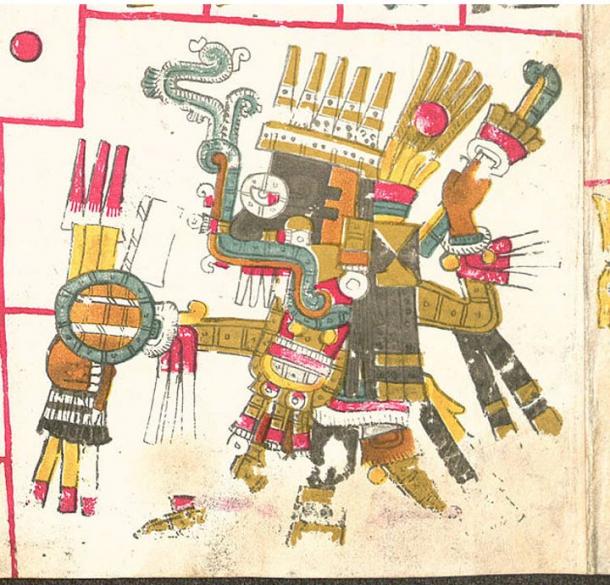
Chaac and Tlaloc: Two Pre-Columbian Mesoamerican Gods of the Rain
Chaac (also spelt as Chac) and Tlaloc are two important deities found in the traditional religious beliefs of Pre-Columbian Mesoamerica. These two deities were regarded as major gods due to the belief that they had control over the rains.
Whilst Chaac was the rain god of the Mayans, Tlaloc was worshipped by the Aztecs. Although both these deities are said to have played a similar function in their respective societies, they are quite different in a number of other aspects, such as the way they are depicted, and the animals they are commonly associated with.
Chaac
As mentioned in the previous paragraph, Chaac is the rain god worshipped by the Mayans. By extension, Chaac played the role of a god of agriculture and fertility in the Mayan belief system. In addition to controlling the rains and storms, Chaac was also believed to have had power over more destructive natural phenomena, such as hailstorms and hurricanes.

Rain deity impersonator, Classic period. (Public Domain)
At times, Chaac was thought to have been one god, whilst at others, he was four separate deities. This latter aspect had its basis in the four cardinal directions – Chaak Xib Chaac, (the Red Chaac of the East), Sak Xib Chaac, (the White Chaac of the North), Ex Xib Chaac, (the Black Chaac of the West) and Kan Xib Chaac, (the Yellow Chaac of the South). Chaac was one of the oldest Mayan deities. Yet, most images of him are said to come from painted vessels of the Classical period, and Postclassical codices.
- Aztec Creation myths
- Wireless Robot discovers three chamber in Teotihuacan
- Sacrificial gifts found at Aztec Temple in Mexico feature a trove of diverse species

Chaac statue. (Public Domain)
Like many other Mayan deities, the representation of Chaac is that of a human being with animal features. In the case of Chaac, these features include reptilian or amphibian attributes such as scales, a long, curly nose, and a protruding lower lip.
Chaac is also shown carrying a stone axe, which he was said to use to produce rain, thunder, and lightning by hitting the clouds. In some instances, Chaac is depicted with tears flowing from his eyes to symbolize rain.
Not too long ago it was discovered that the sacrificial victims offered to Chaac by the Mayans were young boys, rather than virgin girls as previously thought. It has also been speculated that since Chaac was believed to have been helped by four dwarfs, children were this deity’s preferred offering.
Tlaloc
Chaac’s Aztec counterpart is known as Tlaloc. Like Chaac, Tlaloc is also an ancient deity, and was in charge not only of the rains, but also had jurisdiction over agriculture and fertility. Additionally, the Aztecs believed that Tlaloc was the ruler of the fourth heaven or sky, which is known as Tlalocan (meaning the ‘Place of Tlaloc’). This place has been described as a paradise reserved for those who have died violently due to water-related causes, as well as new-born children and women who died during child-birth. On earth, Tlaloc was believed to reside on the top of mountains, especially those covered by clouds, as it was from these high places that the god sent the rains to his worshippers.

Tlaloc in the Codex Borgia. (Public Domain)
Although Tlaloc and Chaac were both rain gods, they are represented quite differently. Tlaloc’s most recognizable features are perhaps his blue skin (sometimes black, or even a ‘dirty’ yellow color), googly eyes, and his jaguar teeth.
According to Aztec belief, Tlaloc was part jaguar and thunder was produced when the god roared. Alternatively, Tlaloc used a rattle to produce thunder. As for lightning, Tlaloc is shown wielding a lightning bolt in early representations of this god. Therefore, it is by this means that lightning was made by Tlaloc.
- The Music of the Maya: Mysterious whistles Confound Experts
- The Spectacular Ancient Maya City of Uxmal
- The Mystery of Stonehenge, Ancient Petroglyphs and Crop Circles
Like his Mayan counterpart, Tlaloc was also aided in his job by supernatural beings. These assistants are known as the Tlaloques, and were regarded both as parts of the god, and as gods in their own right. The Tlaloques are believed to be responsible for ‘brewing’ rain on the mountaintops, and then sending it, along with lightning and thunder, to the earth. Each Tlaloque come in one of the following four colors – blue, white, yellow and red.

Tlaloc. (public domain)
Additionally, Tlaloc is said to have married the goddess Chalciuhtlicue (meaning ‘she of the jade skirt’). Although she was not involved in rain-making, this goddess is associated with running waters, and was regarded as a patroness of birth, a role which perhaps complemented her husband’s role as a fertility god.
Featured image: Tlaloc (left) (CC BY-NC-ND 3.0) and Chaac (right) (CC BY-NC-SA 3.0)
By Ḏḥwty
References
Maestri, N., 2014. Tlaloc, the Aztec Rain God. [Online]
Available at: http://archaeology.about.com/od/tterms/a/Tlaloc.htm
Maestri, N., 2016. Chaac. [Online]
Available at: http://archaeology.about.com/od/mayaarchaeology/a/Mayan-Rain-God-Chaac.htm
Native Languages of the Americas, 2015. Native Languages of the Americas: Maya Legends, Myths, and Stories. [Online]
Available at: http://www.native-languages.org/maya-legends.htm
Reuters, 2008. Ancient Maya sacrificed boys not virgin girls: study. [Online]
Available at: http://www.reuters.com/article/us-mexico-sacrifice-idUSWRI32680820080123
www.azteccalendar.com, 2016. Tlaloc. [Online]
Available at: https://www.azteccalendar.com/god/Tlaloc.html
www.crystalinks.com, 2016. Mayan Gods and Goddesses. [Online]
Available at: http://www.crystalinks.com/mayangods.html
www.mexicolore.co.uk, 2016. God of the Month: Tlaloc. [Online]
Available at: http://www.mexicolore.co.uk/acrobats/319_1.pdf















